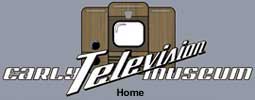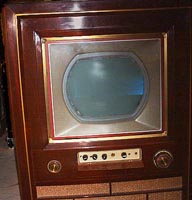The Set: Pete Deksnis's Site about the CT-100 Restoring a Vintage Color Television Set |
Pin 1 of a 6BD4 is the cathode connection.
Pin 8 of a 6BD4 is not used.
Unfortunately, in 1954 RCA used pin 8 of the 6BD4 octal socket in a CT-100 as a tie point.*
-------
Pin 1 of a 6BK4 is the cathode.
Pin 8 of a 6BK4 is internally connected to pin 1.
So...
Replacing a 6BD4 (or 6BD4A) with a 6BK4
will shunt the cathode and grid with a one-megohm resistance
(applies to the early boost B+ configuration;
150K if it's the revised boost B+),
which alters the high-voltage regulator circuit.
*The CT-100 uses pin 8 of the 6BD4 high-voltage regulator as a tie point for the junction of 3C213 and 3R258 (RCA) or C141 and R183 (Sams) .

